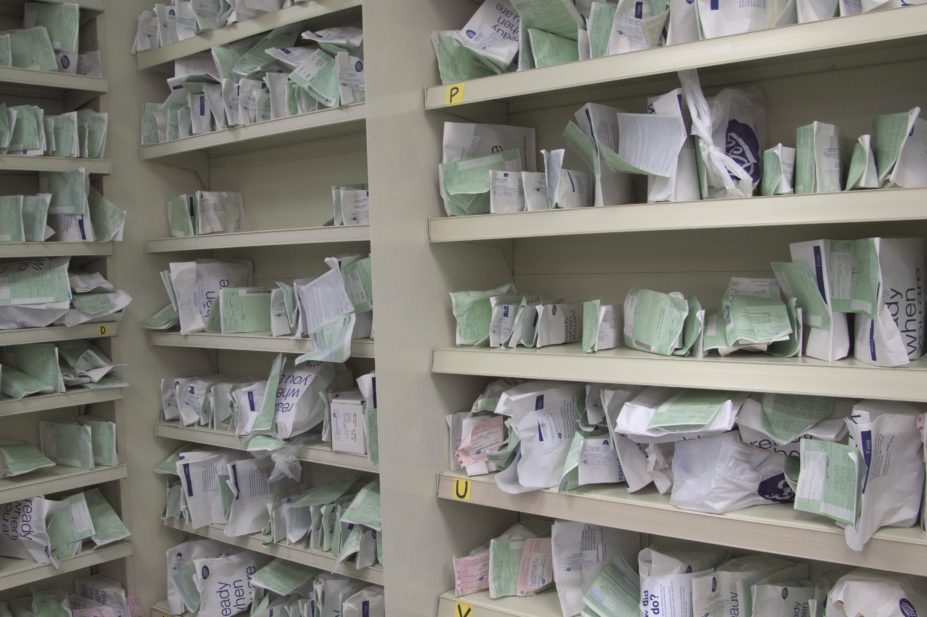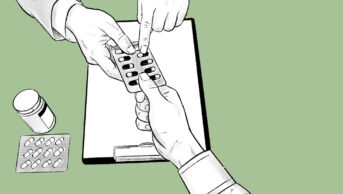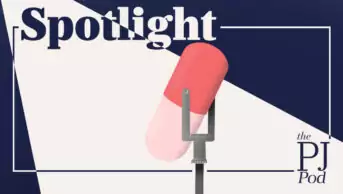
David Pearson / Alamy
The number of prescription items dispensed in the community in England increased by 3.3% between 2013 and 2014 and by 55.2% in the past ten years, according to figures published on 7 July 2015. In Scotland, the increase was lower, with a rise of 2.4% in prescription items dispensed in 2014–2015 compared with the previous 12 months and an increase of 34.9% over the past decade.
There were more than 1.1 billion prescription items dispensed in England in 2014 — 34.5 million more than in the previous 12 months and 378.4 million more than in 2004, according to the statistics from the Health and Social Care Information Centre (HSCIC).
The total net ingredient cost of prescribed items increased by 2.6% between 2013 and 2014 to £8.9bn, and by 9.6% since 2004, when the total cost was £8.1bn.
Although patients in England still have to pay for their prescriptions, the HSCIC found that 89.9% of all items dispensed were free of charge. Around 60% of all prescriptions were for patients aged over 60 years. The average net ingredient cost per prescription item decreased from £11.78 in 2004 to £8.32 in 2014.
In the past year, the NHS bill for medicines prescribed to prevent blood clots — anticoagulants — rose by 47.8%, equivalent to an increase of £44.8m. The growth can be attributed to three new oral anticoagulants — rivaroxaban, apixiban and dabigatran etexilate, which are recommended by the National Institute for Health and Care Excellence (NICE) for the prevention of stroke and systemic embolism in patients with atrial fibrillation. Although their use has been “relatively low” compared with the alternative drug warfarin, their costs are much higher, the report says.
The cost of epilepsy drugs rose by 10.6% between 2013 and 2014. Some £36.1m of the extra £46.6m was attributed to pregabalin. This was the largest increase for any medicine in the 12-month period, according to the HSCIC.
The statin atorvastatin was responsible for the greatest increase in the number of items dispensed between 2013 and 2014, the report reveals. Some four million more items were dispensed in the 12-m
onth period
—
confirming a prediction in July 2014 that it would become the most prescribed drug in the UK following changes to cardiovascular guidelines from NICE, which
recommended that atorvastatin be offered to all patients with a 10% or greater risk of developing cardiovascular disease in the next ten years.
The HSCIC report, ‘Prescriptions dispensed in the community 2004–2014’, also reveals a 7.2% rise in the number of antidepressants dispensed between 2013 and 2014, up from 53.3 million to 57.1 million. The number of items dispensed for antidepressants has nearly doubled in the past ten years, it says.
Data for Scotland from the Information Services Division (IDS), published on 30 June 2015, show that the total number of items dispensed in the community in 2014–2015 was 101.1 million. The total net cost of items increased by 4.3% compared with the previous year, rising to £1.2bn.
In Scotland, the proton pump inhibitor omeprazole was the most commonly prescribed drug in 2014–2015. Inhalers containing salmeterol with fluticasone propionate had the highest total gross ingredient cost in 2014–2015 at £41.0m. This has been the drug with the highest cost in Scotland since 2011–2012.


